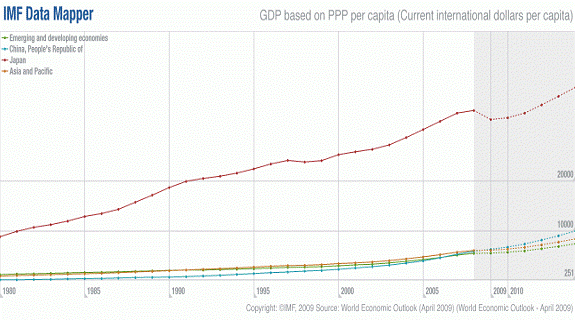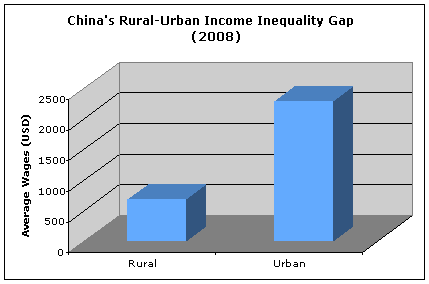By Daniel Wagner & CJ Redfern
In the 1980s most pundits thought Japan would become an economic juggernaut that would surpass Europe and the United States in economic strength within a decade. But Japan used its newly found wealth inappropriately by failing to implement and enforce adequate regulatory checks and balances, overpaying for overseas assets, and refusing to address its financial crisis in a meaningful way. Japan continues to pay the price for this mistake – its stock market remains depressed by 75 percent from its all time high in 1989.
Although "Pax Japanica" never materialized, few pundits today doubt that simply by virtue of its size and scope, "Pax China" will ultimately materialize, since China is better positioned to achieve more than Japan was able to achieve in the 1980s. Comparing Japan's economic performance over the past 20 years with China's performance this decade provides some insight into what China needs to do to avoid Japan's mistakes and reveals what may lay ahead for China, and the rest of the world.
Japan initially managed the "Japanese Challenge" of the 1970s extremely well, establishing a form of corporatism that merged the top private corporations and the government into a quasi-symbiotic relationship, each feeding upon and supporting the other. The government implicitly supported corporate initiatives, using public money to supplement and subsidize overseas Japanese business – a practice that continues to this day. Doing so positively impacted the Japanese economy by encouraging an evolution from a focusing primarily on manufacturing basic electronics and plastics to producing advanced technologies and biotechnologies. Japan experienced rapid growth through the 1970s and 1980s based primarily on its ability to establish a virtual global monopoly on mass-produced electronics and emerging technologies.
As noted in the graph below, Japan experienced high GDP based on Purchasing Power Parity per capita since the 1980s, which proceeded virtually uninterrupted until 2008.

But Japan's credit and real estate bubble ultimately imploded in 1989, the result of inflated prices, risky lending, and speculation that resulted in a hyper-inflated market. Although Japan's stock market never came close to recovering in the 20 years that have passed, its per capita GDP continued to grow apace, and its economy continued to expand. The International Monetary Fund predicts Japan will continue to have high GDP PPP per person in the next decade.
Japan had some advantages China did not and does not have. As a fully industrialized nation, Japan did not have to devote substantial financial resources toward alleviating poverty or building up its infrastructural base. By contrast, China's long march toward rapid modernization and industrialization has resulted in large income disparities, a large gap in productivity between the manufacturing and agricultural sectors, and virtually unchecked urban migration.
The graph below illustrates the large income inequality gap that exists in China today. There are vast income disparities between urban and rural populations, between the prosperous coastal, interior, and western regions of the country, and between the manufacturing and agricultural sectors. Yet China has been able to either surpass or sidestep these contradictions to become the Asia's economic hegemon. How did it do this?

Source: Chinese Ministry of Agriculture/BBC News